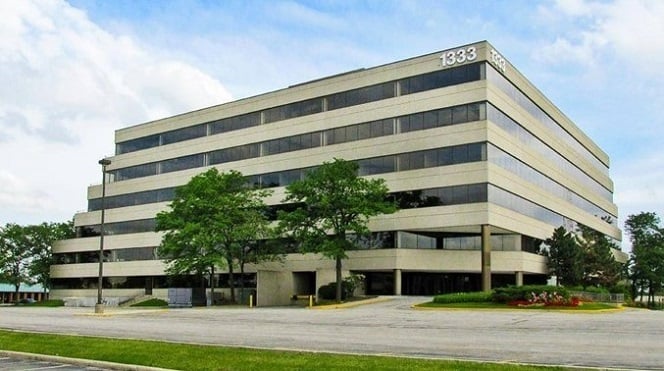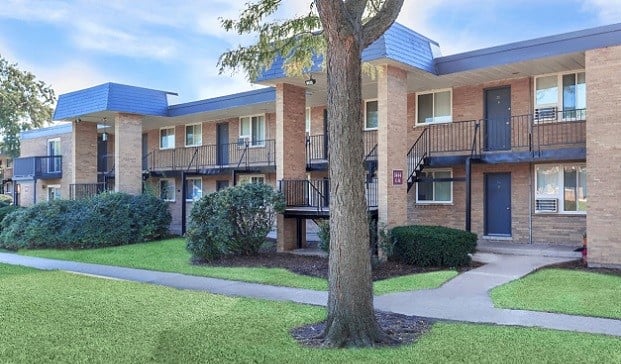CHICAGO—Life sciences companies large and small continue to pay top dollar for amenities-rich locations and facilities in a select group of top US markets, according to JLL's latest Life Sciences Outlook. Year after year, the metro areas of Boston, San Francisco, San Diego and Raleigh-Durham have proven most attractive to this research-heavy industry. But that does not mean no changes will occur in the sector over the next few years.
“Like any industry, life sciences are trying to attract and retain talent,” Roger Humphrey, executive managing director and leader of Chicago-based JLL's life sciences group, tells GlobeSt.com. “And that means serving a multi-generational workforce.”
Of course, he adds, creating collaborative spaces that millennials find attractive is hardly unique to life sciences. But shifting parts of this industry, which has been heavily concentrated in suburban office parks, to the more urban spaces desired by younger workers presents several challenges.
Humphrey came to JLL from pharmaceutical giant Merck, where he built up its global real estate department, so he understands that these companies want their office and research spaces in close proximity, and that the latter have standards for cleanliness, pest control and air quality “well above and beyond what you would see in a typical office space.” Build-outs for such space can cost $1,000 per square foot.
That tends to push these tenants into sticking with familiar landlords in familiar cities. “It's hard for these companies to pull out of the life sciences clusters,” says Lisa Strope, director at JLL's New England research department. Not only do they have access to landlords with the knowledge needed to design their spaces, but each cluster contains the universities that educate their talent. Furthermore, these metros all have highly-developed ecosystems of venture capital firms that focus on life sciences.
But landlords in the field still have to keep up with the modern desire for a more engaging workplace, says Wes Simon, an JLL analyst in Boston. He points to The Alexandria at Torrey Pines in San Diego as an example. Alexandria Real Estate Equities designed an urban-like amenities center for this suburban campus that boasts a fitness center, restaurant and bar, and patio. Open to all tenants, it “creates a collaborative, innovative environment that is really a tight-knit community.”
And in San Francisco, HCP has started building The Cove at Oyster Point, a seven-building campus with world-class public amenities such as bocce ball courts, a bowling alley and a full gym.
“Overall, as an asset class, life sciences has come into its own,” says Strope, a fact illustrated by the recent movement of institutional investors into the field. Attracted by life sciences' high lab rents and potential for robust expansion, the Blackstone Group, for example, entered into an $8 billion agreement in late 2015 to acquire BioMed Realty Trust. The San Diego-based firm specializes in healthcare properties, including lab space, and has a significant presence in Boston, San Francisco, Raleigh-Durham and Seattle. And the financial heft of Blackstone will provide even more opportunities to grow and develop new facilities.
And although Simon expects that the life sciences sector will strengthen in the top four or five markets over the next few years, there is also a strong possibility that new clusters will develop. New York and Houston, especially, due to their great universities, major healthcare complexes, and backing from their respective governments, could challenge the other markets. However, “in the short-term, no one will catch up to Boston.”
CHICAGO—Life sciences companies large and small continue to pay top dollar for amenities-rich locations and facilities in a select group of top US markets, according to JLL's latest Life Sciences Outlook. Year after year, the metro areas of Boston, San Francisco, San Diego and Raleigh-Durham have proven most attractive to this research-heavy industry. But that does not mean no changes will occur in the sector over the next few years.
“Like any industry, life sciences are trying to attract and retain talent,” Roger Humphrey, executive managing director and leader of Chicago-based JLL's life sciences group, tells GlobeSt.com. “And that means serving a multi-generational workforce.”
Of course, he adds, creating collaborative spaces that millennials find attractive is hardly unique to life sciences. But shifting parts of this industry, which has been heavily concentrated in suburban office parks, to the more urban spaces desired by younger workers presents several challenges.
Humphrey came to JLL from pharmaceutical giant Merck, where he built up its global real estate department, so he understands that these companies want their office and research spaces in close proximity, and that the latter have standards for cleanliness, pest control and air quality “well above and beyond what you would see in a typical office space.” Build-outs for such space can cost $1,000 per square foot.
That tends to push these tenants into sticking with familiar landlords in familiar cities. “It's hard for these companies to pull out of the life sciences clusters,” says Lisa Strope, director at JLL's New England research department. Not only do they have access to landlords with the knowledge needed to design their spaces, but each cluster contains the universities that educate their talent. Furthermore, these metros all have highly-developed ecosystems of venture capital firms that focus on life sciences.
But landlords in the field still have to keep up with the modern desire for a more engaging workplace, says Wes Simon, an JLL analyst in Boston. He points to The Alexandria at Torrey Pines in San Diego as an example. Alexandria Real Estate Equities designed an urban-like amenities center for this suburban campus that boasts a fitness center, restaurant and bar, and patio. Open to all tenants, it “creates a collaborative, innovative environment that is really a tight-knit community.”
And in San Francisco, HCP has started building The Cove at Oyster Point, a seven-building campus with world-class public amenities such as bocce ball courts, a bowling alley and a full gym.
“Overall, as an asset class, life sciences has come into its own,” says Strope, a fact illustrated by the recent movement of institutional investors into the field. Attracted by life sciences' high lab rents and potential for robust expansion, the Blackstone Group, for example, entered into an $8 billion agreement in late 2015 to acquire BioMed Realty Trust. The San Diego-based firm specializes in healthcare properties, including lab space, and has a significant presence in Boston, San Francisco, Raleigh-Durham and Seattle. And the financial heft of Blackstone will provide even more opportunities to grow and develop new facilities.
And although Simon expects that the life sciences sector will strengthen in the top four or five markets over the next few years, there is also a strong possibility that new clusters will develop.
Want to continue reading?
Become a Free ALM Digital Reader.
Once you are an ALM Digital Member, you’ll receive:
- Breaking commercial real estate news and analysis, on-site and via our newsletters and custom alerts
- Educational webcasts, white papers, and ebooks from industry thought leaders
- Critical coverage of the property casualty insurance and financial advisory markets on our other ALM sites, PropertyCasualty360 and ThinkAdvisor
Already have an account? Sign In Now
*May exclude premium content© 2025 ALM Global, LLC, All Rights Reserved. Request academic re-use from www.copyright.com. All other uses, submit a request to [email protected]. For more information visit Asset & Logo Licensing.









